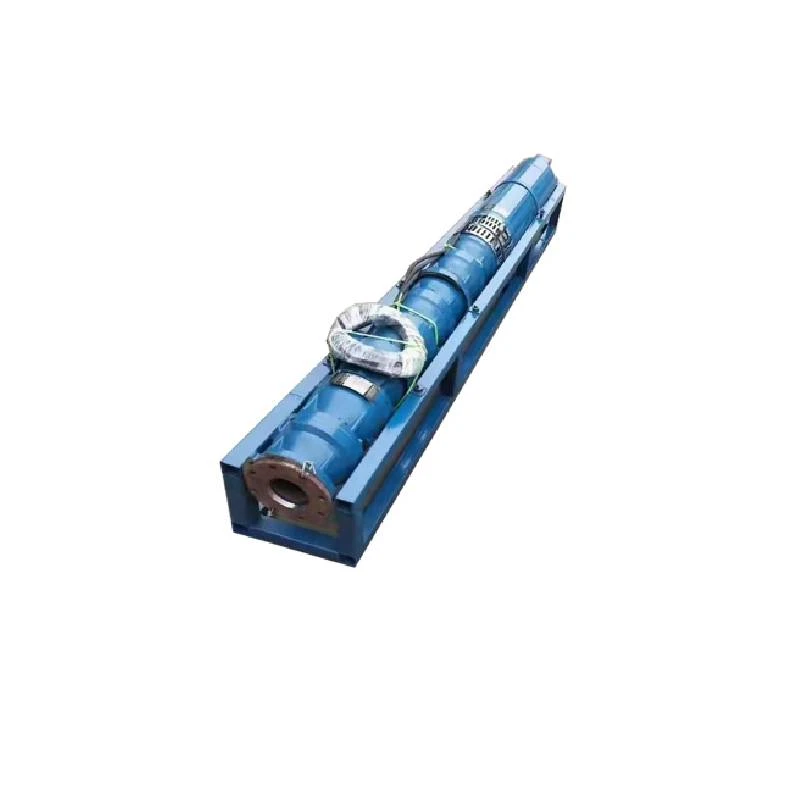کانونی یەکەم . 19, 2024 05:50 Back to list
Cost of Replacing Submersible Water Well Pumps Explained in Detail
Understanding the Costs of Replacing a Submersible Water Well Pump
When it comes to ensuring a reliable supply of water, particularly in rural areas or places where municipal water is not easily accessible, submersible water well pumps play a critical role. These pumps are designed to be submerged underwater and are used for drawing water from wells, aquifers, or other underground sources. However, like all mechanical systems, submersible pumps can experience wear and tear over time, necessitating replacement. Understanding the costs associated with this replacement is vital for homeowners and property managers alike.
Factors Influencing Replacement Costs
1. Pump Type and Size Submersible pumps come in various types, sizes, and power ratings. The cost of the pump itself can vary significantly based on these factors. A small, low-capacity pump designed for residential use may cost between $200 and $1,000, while larger pumps used for agricultural or industrial applications can range from $1,000 to several thousand dollars. It’s essential to choose a pump suitable for the specific requirements of your water source and usage.
2. Installation Complexity The complexity of the installation can significantly influence total costs. If your existing pump is easily accessible and the new pump can be installed without major modifications, costs will typically be lower. However, if the installation site requires special equipment, such as a crane for deeper wells, or if structural modifications are necessary, installation costs can increase dramatically.
3. Labor Costs Labor rates can vary considerably based on geographic location and the contractor's expertise. On average, you might expect to pay anywhere between $50 to $150 per hour for a qualified technician. In many cases, the total labor cost for replacing a submersible pump can range from $200 to $500 or more, depending on the duration and complexity of the job.
4. Additional Components When replacing a submersible pump, additional components may also need to be replaced or upgraded. This could include pressure tanks, electrical wiring, or discharge lines, which can add to the overall cost of the project. It’s crucial to assess the condition of these components to avoid future problems.
5. Permits and Regulations In some areas, replacing a well pump may require permits or adherence to local regulations. Fees associated with these permits can vary, and it's advisable to check with local authorities before proceeding with the installation.
submersible water well pump replacement cost

Average Cost Breakdown
On average, the total cost for replacing a submersible water well pump can range from $1,500 to $3,500, including both parts and labor. Here’s a simplified breakdown to illustrate potential costs
- Pump Cost $200 - $2,000+ - Labor Cost $200 - $500 - Additional Components $100 - $1,000 - Permits $50 - $200
This total can fluctuate based on the factors discussed, with the potential for costs to exceed the high end of the range if extensive repairs or high-end components are necessitated.
Maintenance and Longevity Considerations
To extend the lifespan of your submersible pump and potentially reduce replacement frequency, regular maintenance is essential. Simple actions like inspecting electrical connections, cleaning the pump and surrounding area, and ensuring the pump is operating efficiently can greatly contribute to its longevity. Many industry professionals recommend having an annual maintenance check to identify any issues before they escalate.
Conclusion
Replacing a submersible water well pump is a significant investment that requires careful planning and consideration. By understanding the factors that influence replacement costs, including the type and size of the pump, installation complexity, and additional necessary components, homeowners can make informed decisions that suit their budgets and water needs. It’s always advisable to consult with a qualified professional to obtain estimates tailored to your specific situation and to ensure that the replacement process goes smoothly. By prioritizing maintenance and being aware of your options, you can ensure that your water supply remains uninterrupted for years to come.
-
Submersible Water Pump: The Efficient 'Power Pioneer' of the Underwater World
NewsJul.01,2025
-
Submersible Pond Pump: The Hidden Guardian of Water Landscape Ecology
NewsJul.01,2025
-
Stainless Well Pump: A Reliable and Durable Pumping Main Force
NewsJul.01,2025
-
Stainless Steel Submersible Pump: An Efficient and Versatile Tool for Underwater Operations
NewsJul.01,2025
-
Deep Well Submersible Pump: An Efficient 'Sucker' of Groundwater Sources
NewsJul.01,2025
-
Deep Water Well Pump: An Efficient 'Sucker' of Groundwater Sources
NewsJul.01,2025
-
 Submersible Water Pump: The Efficient 'Power Pioneer' of the Underwater WorldIn the field of hydraulic equipment, the Submersible Water Pump has become the core equipment for underwater operations and water resource transportation due to its unique design and excellent performance.Detail
Submersible Water Pump: The Efficient 'Power Pioneer' of the Underwater WorldIn the field of hydraulic equipment, the Submersible Water Pump has become the core equipment for underwater operations and water resource transportation due to its unique design and excellent performance.Detail -
 Submersible Pond Pump: The Hidden Guardian of Water Landscape EcologyIn courtyard landscapes, ecological ponds, and even small-scale water conservancy projects, there is a silent yet indispensable equipment - the Submersible Pond Pump.Detail
Submersible Pond Pump: The Hidden Guardian of Water Landscape EcologyIn courtyard landscapes, ecological ponds, and even small-scale water conservancy projects, there is a silent yet indispensable equipment - the Submersible Pond Pump.Detail -
 Stainless Well Pump: A Reliable and Durable Pumping Main ForceIn the field of water resource transportation, Stainless Well Pump has become the core equipment for various pumping scenarios with its excellent performance and reliable quality.Detail
Stainless Well Pump: A Reliable and Durable Pumping Main ForceIn the field of water resource transportation, Stainless Well Pump has become the core equipment for various pumping scenarios with its excellent performance and reliable quality.Detail
